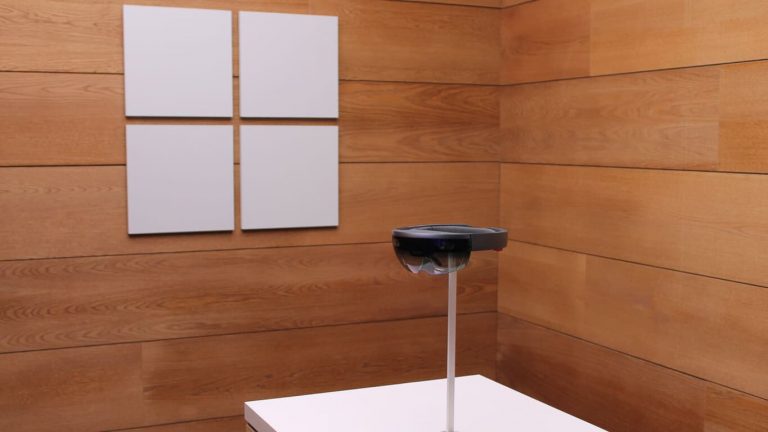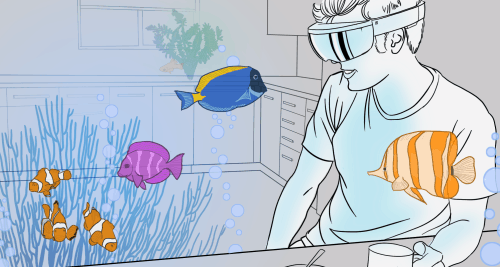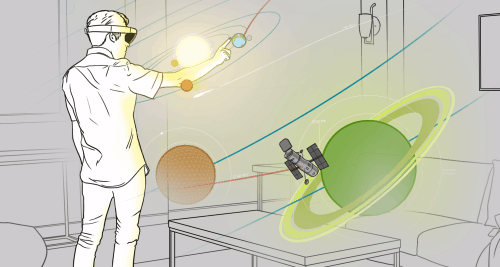On the one year anniversary of Microsoft’s announcement of HoloLens, the company is giving us a bit more information on the device – more specifically the ways that we’re going to be interacting with it. In a new blog post, Microsoft went about using the ideas from their new Share Your Idea campaign to provide examples for using the three main ways that users are going to interact with HoloLens: Gaze, gesture, and voice.
Arguably the most important of the three is gaze. Think of your gaze with HoloLens as your mouse cursor – it’s there to select things in the world around you, and give context to the other two interactions so that they don’t need to be terribly specific. Microsoft used the example of Airquarium, one of the Share Your Idea finalists, to help you grasp the concept.
One of the core ideas is that you can look at anything and issue a tap to find out more about the animal that you selected. The way the system understands what to give facts and stats about when you issue a command is from gaze.
Once you have the item of interest in your gaze, you can then go about using that context and issuing actual commands to the HoloLens via either gesture or voice. Gesture ought to work about as intuitively as a Surface device, offering simple and easy to understand hand movement that can help you navigate menus or other environments where your gaze isn’t enough. Simply lock something in your gaze, lift your hand up, and do whatever simple gestures are necessary for the application you’re using.
Voice is an especially important part of the way that users are meant to interact with HoloLens. Because HoloLens is running on Windows 10, it has access to the entire Windows 10 speech engine, which has already been made robust enough by the work that’s been put into optimizing Cortana. You’ll also no longer have to add subjects to your statements in order to refine your voice commands, because using gaze, the HoloLens can put your simple voice commands in context all by itself.
HoloLens is seeming less like science fiction and more like reality with each passing day. Understanding how simple interacting with the device is a huge step. Knowing that it’s just going to be this simple should be a big load off for people with concerns that Microsoft may overcomplicate its first endeavor in the world of augmented reality. With the Share Your Idea campaign down to its last three finalists (Airquarium, Grab the Idol, and Galaxy Explorer) the HoloLens is looking closer to us than ever before, and the applications of it are seeming more enticing by the second. With any luck, we’ll be seeing quality apps like these three making their way to HoloLens in droves once the device becomes a household name.




